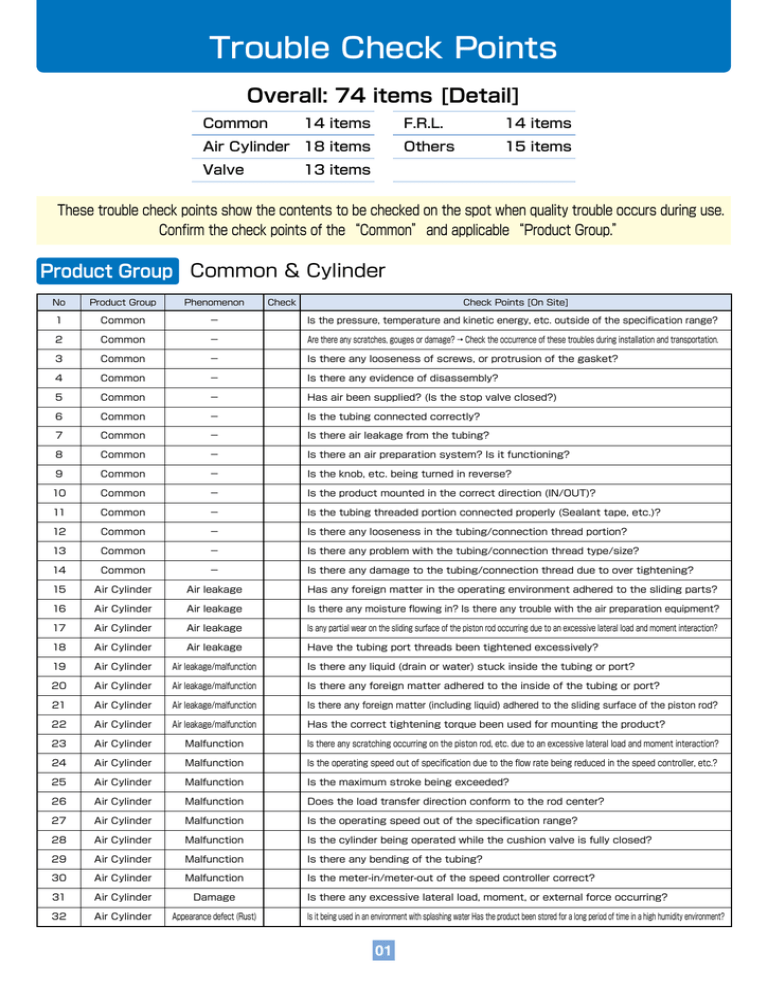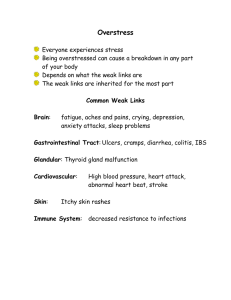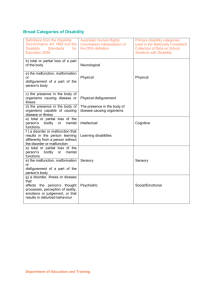Click here for trouble check points
advertisement

Trouble Check Points Overall: 74 items [Detail] Common 14 items Air Cylinder 18 items Valve F.R.L. 14 items Others 15 items 13 items These trouble check points show the contents to be checked on the spot when quality trouble occurs during use. Confirm the check points of the “Common” and applicable “Product Group.” Product Group Common & Cylinder No Product Group Phenomenon Check Check Points [On Site] 1 Common − Is the pressure, temperature and kinetic energy, etc. outside of the specification range? 2 Common − Are there any scratches, gouges or damage? → Check the occurrence of these troubles during installation and transportation. 3 Common − Is there any looseness of screws, or protrusion of the gasket? 4 Common − Is there any evidence of disassembly? 5 Common − Has air been supplied? (Is the stop valve closed?) 6 Common − Is the tubing connected correctly? 7 Common − Is there air leakage from the tubing? 8 Common − Is there an air preparation system? Is it functioning? 9 Common − Is the knob, etc. being turned in reverse? 10 Common − Is the product mounted in the correct direction (IN/OUT)? 11 Common − Is the tubing threaded portion connected properly (Sealant tape, etc.)? 12 Common − Is there any looseness in the tubing/connection thread portion? 13 Common − Is there any problem with the tubing/connection thread type/size? 14 Common − Is there any damage to the tubing/connection thread due to over tightening? 15 Air Cylinder Air leakage Has any foreign matter in the operating environment adhered to the sliding parts? 16 Air Cylinder Air leakage Is there any moisture flowing in? Is there any trouble with the air preparation equipment? 17 Air Cylinder Air leakage Is any partial wear on the sliding surface of the piston rod occurring due to an excessive lateral load and moment interaction? 18 Air Cylinder Air leakage Have the tubing port threads been tightened excessively? 19 Air Cylinder Air leakage/malfunction Is there any liquid (drain or water) stuck inside the tubing or port? 20 Air Cylinder Air leakage/malfunction Is there any foreign matter adhered to the inside of the tubing or port? 21 Air Cylinder Air leakage/malfunction Is there any foreign matter (including liquid) adhered to the sliding surface of the piston rod? 22 Air Cylinder Air leakage/malfunction Has the correct tightening torque been used for mounting the product? 23 Air Cylinder Malfunction Is there any scratching occurring on the piston rod, etc. due to an excessive lateral load and moment interaction? 24 Air Cylinder Malfunction Is the operating speed out of specification due to the flow rate being reduced in the speed controller, etc.? 25 Air Cylinder Malfunction Is the maximum stroke being exceeded? 26 Air Cylinder Malfunction Does the load transfer direction conform to the rod center? 27 Air Cylinder Malfunction Is the operating speed out of the specification range? 28 Air Cylinder Malfunction Is the cylinder being operated while the cushion valve is fully closed? 29 Air Cylinder Malfunction Is there any bending of the tubing? 30 Air Cylinder Malfunction Is the meter-in/meter-out of the speed controller correct? 31 Air Cylinder Damage 32 Air Cylinder Appearance defect (Rust) Is there any excessive lateral load, moment, or external force occurring? Is it being used in an environment with splashing water Has the product been stored for a long period of time in a high humidity environment? 01 Product Group Valve, F.R.L., Pressure gauge, Vacuum ejector, Auto switch, Fittings No Product Group Phenomenon Check Check Points [On Site] 33 Valve Air leakage Has any foreign matter (including drain) adhered to the connection port (fittings) etc.? 34 Valve Air leakage Is there any looseness in the mounting screws of the sub-plate (manifold)? 35 Valve Malfunction Is the voltage within the range of the rated voltage (-10% to +10% )? 36 Valve Malfunction Is the product installed in a location where it is exposed to vibrations? 37 Valve Malfunction Has the product been wired correctly? 38 Valve Malfunction Have the wires been securely inserted into the wiring socket? (Pull on the lead wires one at a time to confirm.) 39 Valve Malfunction Are there any scratches on the wiring? 40 Valve Malfunction Has the product been energized for a long time (duty ratio of 50% or more)? 41 Valve Malfunction Is the PE port plugged? 42 Valve Malfunction Is the upstream side tubing diameter sufficient? (Is it being reduced?) 43 Valve Malfunction Is the valve mounted correctly? (Horizontal, vertical) 44 Valve Malfunction Is an electrical signal being received? 45 Valve Malfunction Is there any clogging of the silencer? 46 F.R.L. Air leakage Has the direction been reversed when disassembled to change the specification? 47 F.R.L. Air leakage Have the seals, etc. been omitted when disassembled to change the specification? 48 F.R.L. Air leakage Was the proper torque used to tighten the screws when disassembled to change the specification? 49 F.R.L. Air leakage Is there any possibility of foreign matter entering into the body when the tubing was connected? (Including entry from the OUT port) 50 F.R.L. Air leakage Has an inspection been implemented beyond the specifications? (When an enclosure inspection of the secondary side air is performed with the regulator, if the pressure decreases even slightly it is not acceptable.) 51 F.R.L. Air leakage Is the operating pressure of the normally closed float type auto drain at the specified value or more? (AD17, 27 = 0.1 MPa or more, AD37, 47 = 0.15 MPa or more) 52 F.R.L. Air leakage Has the non-relieving or relieving type been selected properly? 53 F.R.L. Air leakage Was there any mistake in the reassembly? (Pressure gauge adapter, blanking plate, check valve, etc.) 54 F.R.L. Air leakage Is there any foreign matter through the tubing adhered to the inside of the port? 55 F.R.L. Malfunction Has the AL sight dome been turned with excessive torque? (Is the sight dome deformed?) 56 F.R.L. Malfunction Is there any possibility that the product was dropped on the floor, hit against something, or had an impact applied? 57 F.R.L. Malfunction Is the IN/OUT correct? 58 F.R.L. Malfunction Has the inlet pressure and the outlet flow rate been fluctuating? 59 F.R.L. Air leakage Is there any solvent in the environment? 60 Pressure Gauge Malfunction Has excessive pressure been applied? 61 Pressure Gauge Malfunction Are there any traces of impact including dropping? 62 Pressure Gauge Malfunction Is there any oscillation or pulsation occurring? 63 Vacuum Ejector Malfunction Is the supply pressure correct? (Set operating pressure) 64 Vacuum Ejector Malfunction Is there any clogging of the element? 65 Vacuum Ejector Malfunction Is power being supplied to the valve? 66 Auto Switch Malfunction Is there any possibility of an over current? → What is the normally used current? 67 Auto Switch Malfunction Is there any effect from the magnetic field of an adjacent cylinder? 68 Auto Switch Malfunction Is there any mis-wiring? 69 Fittings Air leakage Is the tube completely inserted? 70 Fittings Air leakage Has the section of tubing been cut vertically? 71 Fittings Air leakage Is there excessive or insufficient tightening of the threads? 72 Fittings Air leakage Is the sealant tape wound properly? 73 Fittings Air leakage Is there any external force (pulling, bending) of the tubing? 74 Fittings Malfunction Has any foreign matter (including drain) adhered to the connection port (fittings) etc.? 02


